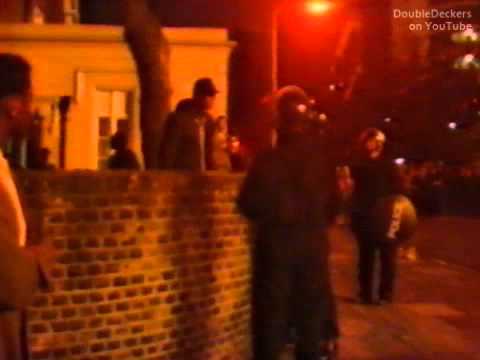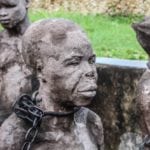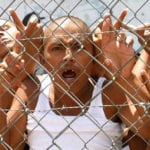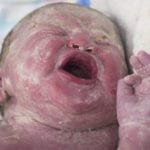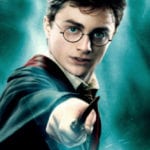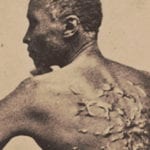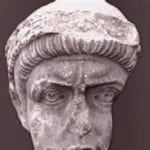While this situation garnered a lot of media attention, it is hardly the first race riot to be sparked by a controversial incident of police violence. When a community is plagued by racial tension, an unjustified act of police brutality can ignite the powder keg.
10The Death Of Arthur McDuffie
One of the most famous riots of all time hit Los Angeles in 1992 after four police officers were acquitted for the beating of Rodney King. A similar series of events took place in Florida 12 years earlier, but in this case, the beating was fatal. In the early morning hours of December 17, 1979, black Miami resident Arthur McDuffie led police on a high-speed chase through the city on his motorcycle. McDuffie was driving with a suspended license. According to the pursuing officers, he crashed his motorcycle and cracked his skull. He was left in a coma and died in the hospital four days later. In actuality, McDuffie had pulled over to the side of the road to surrender. According to witnesses, McDuffie was handcuffed, and several police officers beat him repeatedly for nearly 20 minutes. They then drove over his motorcycle to make it look like his injuries were the result of an accident. Once it became apparent that their cover story was false, six officers were indicted for their roles in McDuffie’s death. However, the all-white jury declared that the state failed to prove its case, acquitting the officers of all charges on May 17, 1980. The community protested, and this quickly escalated into a full-scale riot throughout Miami. The rioting lasted nine days, and a curfew was imposed. A total of 18 people were killed, approximately 300 people were injured, and over 1,400 arrests were made. The city suffered $125 million in damage. The accused police officers were eventually reinstated at their jobs, while Arthur McDuffie’s family received a $1.1 million settlement for his death.
9Clement Lloyd & Arthur Blanchard
A similar incident to the McDuffie riot took place nine years later when two black residents were killed in a controversial police shooting in Miami’s Overtown section. On January 16, 1989, Clement Lloyd was riding his motorcycle with Arthur Blanchard as a passenger. When Lloyd sped through a stop sign, he soon found himself being pursued by a police cruiser. The chase drew the attention of patrol officer William Lozano. As the motorcycle approached Lozano, he pulled out his gun and fired into Lloyd’s head, killing him instantly. The motorcycle crashed, and Blanchard succumbed to the resultant injuries the following day. Lozano claimed that the shooting was self-defense, but witnesses testified that Lozano was in no danger of being hit by the motorcycle. In fact, he’d willingly put himself in harm’s way by stepping out into the street to fire his weapon. The incident spawned three days of race riots in the predominantly black Overtown area. When the mass looting and violence subsided, one person had died, 13 people were shot and wounded, hundreds of arrests were made, and millions of dollars in damage had been done. William Lozano was convicted of two counts of manslaughter and was sentenced to seven years in prison. However, in 1993, Lozano was granted a new trial. Allegedly, the original verdict had been compromised because the jury feared that an acquittal would cause another race riot. This time around, Lozano was acquitted and set free.
8The Death Of Cameron Doomadgee
On the morning of November 19, 2004, 36-year-old Indigenous Australian Cameron “Mulrunji” Doomadgee was singing loudly as he walked through the Aboriginal community of Palm Island. He drew the attention of white police officer Chris Hurley, who thought Doomadgee might be drunk. When Doomadgee started swearing, Hurley picked him up for committing a public nuisance. Less than an hour later, Doomadgee died in his holding cell at the Palm Island police station. The autopsy report revealed that Doomadgee had four broken ribs. The bones had torn his liver in half and ruptured his spleen, killing him via internal bleeding. Hurley claimed that Doomadgee had tripped and fallen over a step at the station, but the community suspected that the police inflicted the injuries. Furthermore, many believed that Doomadgee never should have been arrested and taken into custody in the first place for the minor offense of swearing in public. Over the previous 25 years, nearly 300 Indigenous Australians had died in police custody, and this incident was the breaking point. Over 400 Aboriginal residents stormed the Palm Island police station and burned it down. They did the same thing to the local courthouse, police barracks, and even Chris Hurley’s home. The alleged ringleader was an Aboriginal community activist named Lex Wotton, who was charged with inciting a riot. Hurley was charged with assault and manslaughter, but he was controversially acquitted, while Wotton received a seven-year sentence for his crimes.
7The Shooting Of Robert Bandy
New York City’s Harlem neighborhood used to be one of the most predominantly African-American communities in the country. It has also been the site of numerous race riots brought on by incidents of police brutality. On August 1, 1943, black resident Marjorie Polite got into a confrontation with white police officer James Collins at the Braddock Hotel. When Collins tried to arrest Polite for disturbing the peace, a black uniformed soldier named Robert Bandy intervened. Bandy’s mother was at his side, and she confronted the officer, too. A struggle ensued, and while accounts differ, Collins’s nightstick wound up in Bandy’s hands. Collins pulled out his gun and shot Bandy in the back. The wounded Bandy was taken to Sydenham Hospital for treatment. Once word spread about what had happened, over 3,000 Harlem residents gathered around the hotel, the hospital, and the 28th Precinct. Though Bandy survived the shooting, false rumors circulated that a white police officer had murdered a black serviceman in front of his mother. Even when word got out that Bandy was going to survive, the violence did not cease. For the next 24 hours, police tried to control the rioting, and it finally ended the following evening. Six people were killed, nearly 200 people were injured, approximately 500 arrests were made, and $5 million in damage was done. No charges were ever filed over the shooting of Robert Bandy.
6The Shooting Of James Powell
On July 16, 1964, building superintendent Patrick Lynch became annoyed at a group of black boys hanging out on the steps of his Harlem apartment block. Lynch used a garden hose to get rid of them, allegedly yelling some racial slurs. One of the boys, 15-year-old James Powell, confronted Lynch about his actions. This incident drew the attention of white off-duty police lieutenant Thomas Gilligan. Gilligan fired two shots into Powell, killing him instantly. Gilligan claimed that Powell had lunged at him with a knife. Witnesses disputed this story, claiming that they saw a knife planted at the scene after the shooting took place. The following day, the Congress of Racial Equality showed up in Harlem and organized what was supposed to be a peaceful rally outside the 28th Precinct to demand Gilligan’s suspension. However, the event soon escalated into a violent, full-scale riot. It continued for six consecutive nights and spread from Harlem to the Bedford-Stuyvesant neighborhood in Brooklyn. One rioter was killed, 118 people were injured, and 465 arrests were made. Months later, Lieutenant Gilligan was cleared of any wrongdoing by a grand jury, and no disciplinary action was ever taken.
5The Shooting Of TyRon Lewis
On the evening of October 24, 1996, two white police officers, Jim Knight and Sandra Minor, pursued a sports car that was speeding through St. Petersburg, Florida. The car soon pulled over, and the officers discovered that it was being driven by 18-year-old black man TyRon Lewis and a passenger named Eugene Young. Lewis had a history of criminal behavior, and he was driving a stolen vehicle. According to Knight, he asked Lewis to turn off the engine and raise his hands, but Lewis tried to bump him with the car. While on the vehicle’s hood, Knight fired three fatal shots into Lewis through the windshield. Witnesses at the scene claimed that Knight was completely exaggerating his story about Lewis—the car had barely been moving at all. According to Eugene Young, Lewis yelled at the officer not to shoot as he died. At the time, tensions were so high between the police and the residents of St. Petersburg that rioting began almost immediately once word spread about what had happened. The National Guard had to be called in, and the riot led to 11 injuries (including one police officer, shot in the arm), 20 arrests, and approximately $1 million in property damage. Officers Knight and Minor were cleared of any wrongdoing after an investigation concluded three weeks later. This news only ignited more rioting and destruction in the St. Petersburg area. Two police officers and two firefighters were shot and wounded.
4The Shooting Of Dorothy Groce
In 1981, the Brixton district of South London saw a devastating riot between residents and the police. Four years later, Brixton was the site of another heated riot, this time over a controversial police shooting. On September 28, 1985, police were looking for a black gang member named Michael Groce and went to the home of his mother, Dorothy “Cherry” Groce. Even though Michael was not at the residence, the police burst inside without any warning. They shot Cherry through the lung and spine while she was getting out of her bed. She was taken to the hospital, but the wounds would leave her paralyzed from the chest down for the rest of her life. Cherry Groce was a mother of eight and had posed no threat to the police. The community was outraged. Protesters soon showed up outside of the Groce home and the Brixton police station, and when false rumors started spreading that Cherry had died, gasoline bombs were thrown at the station. The ensuing riot lasted two full days, causing immense property damage, 53 injuries, and 230 arrests. A freelance photographer named David Hodge was attacked by a gang of looters and eventually lapsed into a coma and died from his injuries. Michael Groce surrendered, and the tragedy compelled him to turn his life around and become a respected community leader. Douglas Lovelock, the officer who shot Cherry Groce, was charged with inflicting malicious wounding, but he was acquitted. It was not until 2014, three years after Cherry Groce died, that the police formally apologized for her shooting.
3The Death Of Cynthia Jarrett
The Brixton riot was still fresh in everyone’s minds when another violent riot hit the Broadwater Farm area of Tottenham one week later. On October 5, 1985, a young black man named Floyd Jarrett was pulled over by the police. After Floyd was falsely accused of driving a stolen vehicle, he tried to run away. A scuffle ensued, and Floyd was arrested for theft and assault. The police, led by Deputy Constable Michael Randall, conducted a search of Floyd’s home. After bursting inside, the police crossed paths with Floyd’s 49-year-old mother, Cynthia Jarrett, who suddenly collapsed and died of a heart attack. According to Cynthia’s daughter, the attack occurred after Randall pushed her down. This had come on the heels of Cherry Groce’s shooting. The community was enraged, especially once it became apparent that neither Floyd nor Cynthia Jarrett had any involvement with criminal activity. The day after Cynthia’s death, demonstrators rallied outside the Tottenham police station, and a violent riot broke out. Police constable Keith Blakelock lost his life after being attacked by a group of rioters, who stabbed him 43 times and jammed a knife into his neck. In the end, 250 police officers were injured during the course of the riot, and at least 362 arrests were made. Over the past 30 years, seven different people have been charged with Blakelock’s murder on separate occasions, but there has never been enough evidence to make a conviction. In spite of the allegations that the Tottenham police were responsible for Cynthia Jarrett’s heart attack, no one was ever held liable for her death.
2The Shooting Of Timothy Thomas
In 2001, tensions were running high between the Cincinnati Police Department and Over-The-Rhine, a predominantly black neighborhood of the city. Over the years, many black residents had died under suspicious circumstances after altercations with the officers. Things finally reached their breaking point on April 7 after an arrest warrant was issued for Timothy Thomas, a 19-year-old black man with a number of misdemeanors and traffic offenses on his record. At around 2:00 AM, Thomas was being pursued by several police officers, including patrolman Stephen Roach. While Thomas was rounding a corner into an alley, Roach took out his gun and fatally shot Thomas through the chest. Roach claimed to have seen Thomas reaching for a gun, but Thomas did not have a weapon on him at the time. Even though Thomas had a criminal record, he had no history of violence, so the shooting was believed to be unjustified. Two days after the incident, a group of protesters gathered outside city hall, demanding answers for Thomas’s death. When city officials did not respond to the crowd, a riot ensued, which continued for the next five days, causing approximately $14 million in damage. One police officer was shot and wounded, and over 800 people were arrested. A state of emergency was declared, and the rioting only subsided after a city-wide curfew was enforced. Even though Roach was indicted for negligent homicide, he was acquitted. The incident had a severely negative impact on Cincinnati during the ensuing years, as many people boycotted the city economically to protest what had happened.
1The Murder Of Santos Rodriguez
Brothers Santos and David Rodriguez, aged 12 and 13, lived a rough childhood in Dallas. By 1973, they had already had a few scrapes with the law and were living with their foster grandmother, since their mother was serving five years in prison for murder. In the early hours of July 24, patrolmen Darrell Cain and Roy Arnold chased after three boys whom they saw burglarizing a soda machine at a gas station. Since they’d had prior run-ins with the Rodriguez brothers, the two officers thought they recognized them as the culprits and decided to visit their home. They handcuffed the Rodriguez brothers and drove them to the gas station to interrogate them inside the patrol car about the theft. Santos and David denied responsibility, so Cain decided to play a game of Russian roulette to extract a confession. He pulled out his .357 Magnum and pointed it at Santos’s head. When Santos refused to confess, Cain pulled the trigger twice. The first shot produced only a clicking sound. On the second shot, a bullet entered Santos’s head and killed him instantly. Cain’s defense was that he thought his gun was empty and was unaware that one bullet still remained. The community was outraged, especially once it was discovered that there was no trace of the brothers’ fingerprints on the soda machine, proving that someone else was responsible for the theft. Four days after Santos’s death, a march was held for him outside of city hall in downtown Dallas. It quickly escalated into a riot, which led to 36 arrests and the injuries of five policemen. In the end, Cain received a lenient five-year sentence for Santos’s murder. Robin Warder is a budding Canadian screenwriter who has used his encyclopedic movie knowledge to publish numerous articles at Cracked.com. He is also the co-owner of a pop culture website called The Back Row and recently worked on a sci-fi short film called Jet Ranger of Another Tomorrow. Feel free to contact him here.






